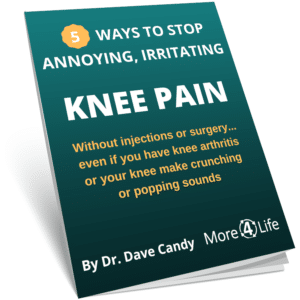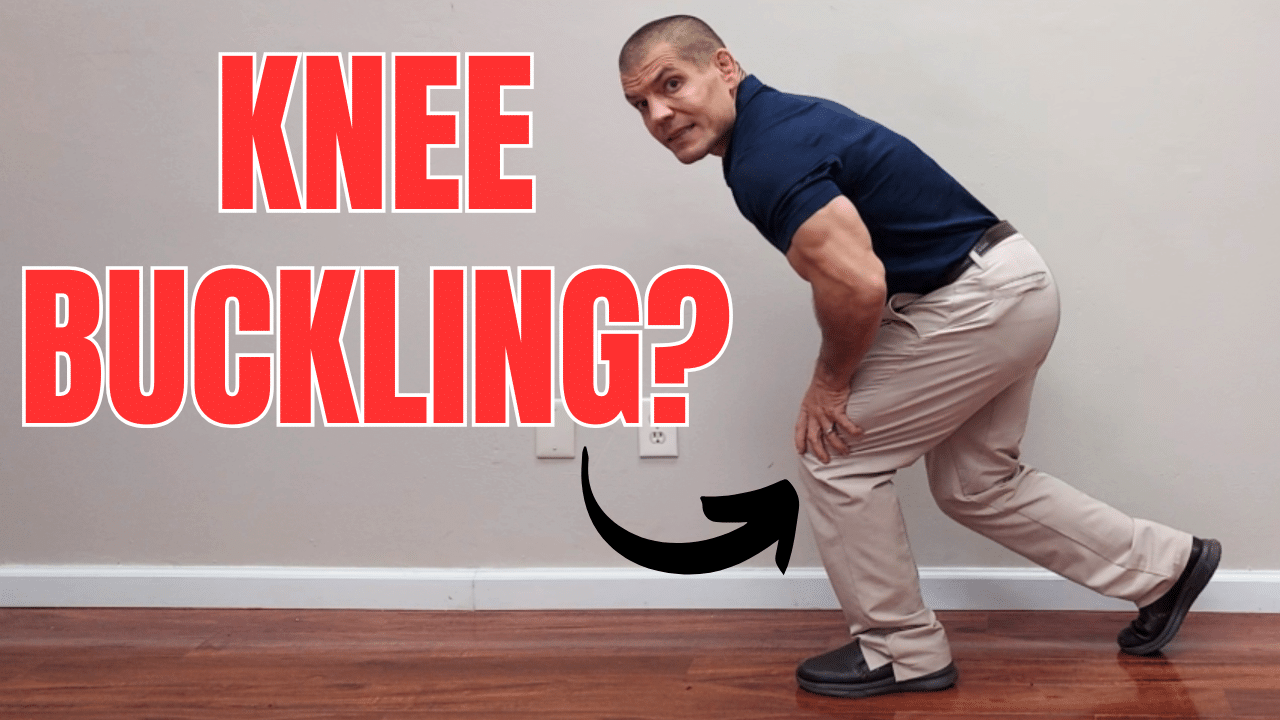Does Your Knee Buckle When Walking or Going Down Stairs?
Learn 3 causes of knee buckling in people over 50 and how to fix them.

Table of Contents
- 3 Causes of Knee Buckling
- Cause 1: Walking on Flat Ground (Lack of Knee Extension / Overstriding)
- Cause 2: Walking on Uneven Ground (Dynamic Valgus)
- Cause 3: Walking Down Stairs (Pain Inhibition)
- Conclusion
3 Causes of Knee Buckling
Does your knee suddenly buckle when you walk or go down stairs? This is common in people over 65. It can be dangerous because it may lead to a fall. Most of the time, though, it does not cause a fall.
If buckling causes repeated falls, see a clinician. But most knee buckling is not a serious structural problem. It is often fixable with simple training and mobility work.
Most knee buckling is a neuromuscular control problem, not true weakness. That means the brain is not sending the muscle signal fast enough. It is a speed-of-activation problem, not just a strength problem.
When the timing of muscle activation is off, the knee can bend quickly and feel like it gives out. Once you understand that, the fixes become clearer.
Cause 1 — Walking on flat ground
What happens: If you hit the ground with your heel and pull your leg forward, your knee may not fully extend. That creates a long lever arm in front of your body. Your brain may expect the knee to be locked. When it is not locked, the quadriceps may not fire fast enough. That can let the knee buckle.
Solution: Push off the back leg and land with your weight over the front foot. This shortens the lever arm. It reduces the force your quadriceps must produce. Practice walking with a slight push-off from the toes and land under your body.
Cause 2 — Walking on uneven ground (dynamic valgus)
What happens: On grass, gravel, or cracked sidewalks, the knee may collapse inward. This is called dynamic valgus. Hip weakness or overpronation often causes it. The brain must react quickly to the sideways wobble.
Solution: Improve balance and hip control. Start with single-leg stands on a firm surface. Progress to standing on a pillow or cushion to make it harder. These drills train your brain to send faster signals to your hip and ankle muscles.
Cause 3 — Walking down stairs (pain inhibition)
What happens: Going downstairs needs ankle and knee bend. Knee pain from the kneecap can make the brain reflexively shut off the quadriceps. This protective shutdown is called pain inhibition. It makes the knee unstable and increases fall risk on stairs.
Solution: Work on ankle mobility and eccentric control of the quads. Try ankle dorsiflexion drills on a stair. Place the foot on a step and rock forward while keeping the heel down. Then do single-leg mini-squats with the foot slightly in front to train knee-over-toe control.
Quick practical tips
- Push off the toes and land with weight over the foot when walking.
- Practice single-leg balance on firm ground first, then on a pillow.
- Do ankle dorsiflexion mobilizations on a stair to improve stepping down.
- Train eccentric single-leg mini-squats to control descent on stairs.
- If you fall repeatedly, seek a clinical exam for structural issues.
Conclusion
Knee buckling is often due to timing and control, not just weakness. Small changes in walking and short exercises can help. Try the tips above and track how you feel.
Need More Help To Keep Your Knee From Buckling?
If you live in the St. Louis area and need more help to improve your knee stability, tap the button below to request an appointment with one of our specialist physical therapists.


